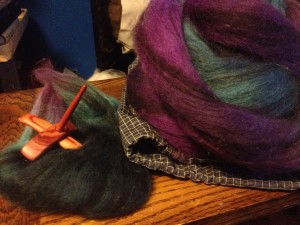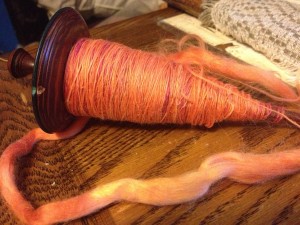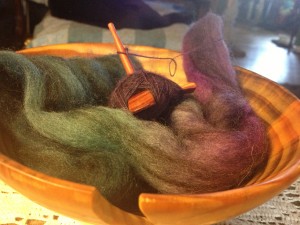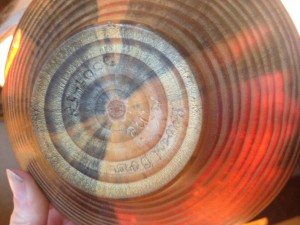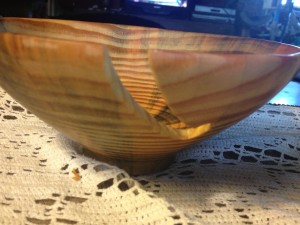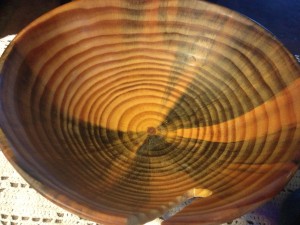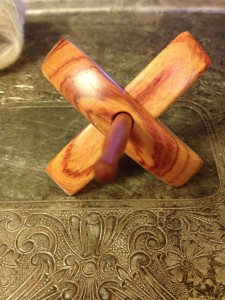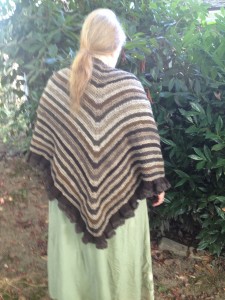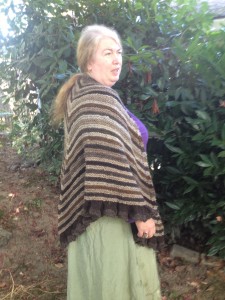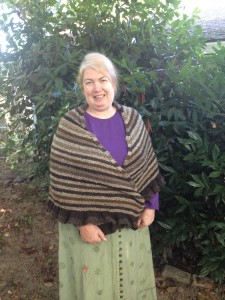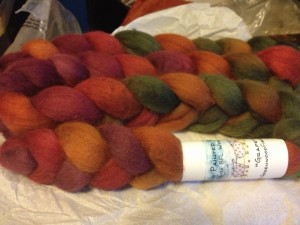I posted this on the Jenkins forum, but thought I’d post it here too. I did a sampling study, which is pretty unusual for me. I noticed that the yarn spun and plied on my Turkish spindles had a puffiness that I hadn’t seen before. I wanted to do a test, with spindles of similar weight and fiber prepared in the same way. So here’s my test, starting with the first group of spindles:
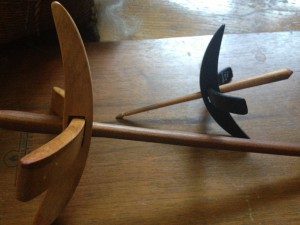
Jenkins Lark and unidentified boat anchor
The high whorls are:
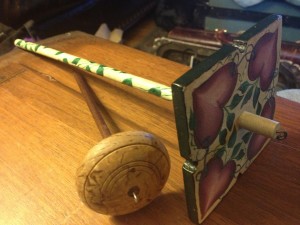
Greensleeves Loki and custom high whorl
The custom is a tiny bit lighter than the boat anchor Turk, but close.
The fiber is a Corriedale/Romney, combed on Viking combs from roughly the same area of the fleece. I tried to use the same draw on both samples. I did give the Turks an extra spin, during the original spinning and also on the plying. The high whorls didn’t need that.
Here are the results;
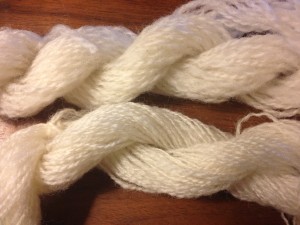
High whorl on the bottom, Turkish spun on top
Second picture of the samples:
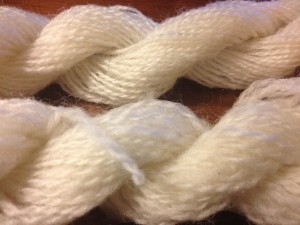
Turkish spun on bottom, high whorl on top
I think you can really see the difference here.
I have not counted twists per inch and it’s likely that the Turks are putting less twist into the fiber. The interesting thing is that you could choose to use Turkish spindles to deliberately get a puffier yarn, even out of fibers that are a bit on the coarse side. But, if you are doing socks, you might want to go with high whorls. That would give you a longer wearing yarn.
If anyone else tries this, please let me know how it turns out! I think I’d like to try it with carded fiber too. I’ve been spinning a long time, but there are still new things to be learned.
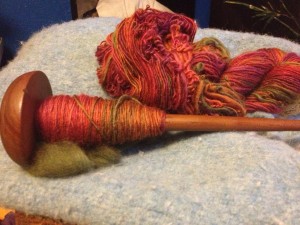 Spinning singles from Grapevine
Spinning singles from Grapevine

